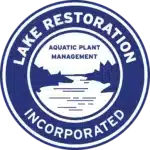Phragmites Removal Will Diversify Your Shoreline and the Ecosystem
There has been considerable debate about whether Phragmites are native to North America or if they should be considered an invasive species. Until recently they were thought to be a non-native invasive species. Regardless of their classification, experts agree that the dense mats these emergent plants form provide little to no value to wildlife and can reduce an area’s diversity of both plants and wildlife species if they become dominant. Their conclusion is that Phragmites removal is recommended to ensure an area’s diversity of native plant and wildlife.
Phragmites control is frequently a multi-step process. Due to the plant’s tendency to overtake large wetland areas and grow thickly, it often takes not only multiple methods to remove the large perennial grass also known as the common reed, but it can also take multiple attempts with these different methods. The thick stalk of the Phragmites can reach up to 13 feet tall and the plant has a hearty bloom that can survive through the winter. The plant reproduces through creeping rhizomes (roots) which is why Phragmites removal is such a challenge. Although mechanical removal methods like mowing, disking, dredging, flooding, draining, burning, and grazing can be effective for a period of time, all of these methods will leave a root system intact and the plants will return within a couple of growing seasons. It has been documented in some European countries that Phragmites will return to an area quite quickly after grazing ends.
Lake Restoration’s method for controlling Phragmites is to use the Open Water Kit®. The kit’s active ingredients are able to penetrate the tough exterior of the plant’s leaves and main stalk and deliver the herbicide to the root where it is effective in killing the plant and preventing growth for an extended period of time. While the use of the Open Water Kit® is the best choice for the plant’s removal, due to the heartiness of the species, eventual re-treatment may be required. But we think that returning your shoreline to an accessible, varied and healthy ecosystem will be a wonderful return on your efforts!
